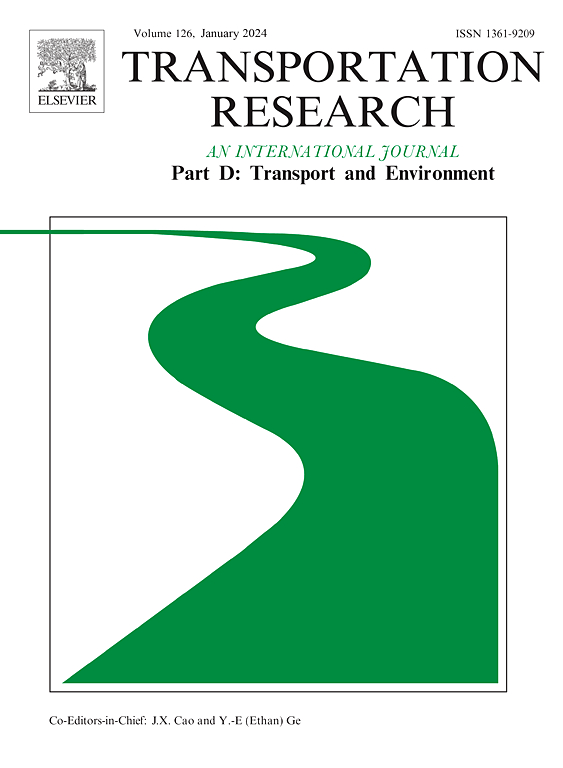不同地铁站台PM浓度的比较
IF 7.3
1区 工程技术
Q1 ENVIRONMENTAL STUDIES
Transportation Research Part D-transport and Environment
Pub Date : 2025-04-23
DOI:10.1016/j.trd.2025.104766
引用次数: 0
摘要
地下地铁站台空气中颗粒物浓度升高,远高于地面环境,这引起了公众越来越多的关注。本研究以斯德哥尔摩三个地下地铁站台的长期颗粒物测量结果为基础,引入了一个指定站台的多因素模型,对之前的单站模型进行了改进。通过纳入特定站台数据,新模型提高了在多个站台的适用性,并分析了列车频率、列车类型、客流量和城市背景 PM 对 PM1、PM2.5 和 PM10 浓度变化的影响。对比分析表明,新模型具有更好的灵活性、准确性和稳定性。结果显示,变量之间存在明显的交互作用,这些因素对 PM 浓度的影响存在特定的站台差异。模型估算结果表明,随着新型列车取代老式列车,不同站台的 PM 浓度会有所不同,但预计会接近斯德哥尔摩交通管理部门设定的建议水平。本文章由计算机程序翻译,如有差异,请以英文原文为准。
A comparison of PM concentration on different underground metro station platforms
The elevated concentration of airborne particulate matter on underground metro platforms, far higher than in aboveground environments, has drawn increasing public attention. This study builds on long-term particulate matter measurements from three underground metro platforms in Stockholm, introducing a platform-specified multi-factor model that improves on the previous single-station model. By incorporating platform-specific data, this new model enhances applicability across multiple stations and analyses the effects of train frequency, train type, passenger flow, and urban background PM on PM1, PM2.5, and PM10 concentration changes. Comparative analysis shows the new model has better flexibility, accuracy, and stability. The results reveal significant interactions between variables, with platform-specific differences in how these factors influence PM concentration rates. Model estimations indicate that as new train types replace older ones, PM concentrations will vary across platforms but are expected to approach the recommended levels set by Stockholm’s transport authorities.
求助全文
通过发布文献求助,成功后即可免费获取论文全文。
去求助
来源期刊
CiteScore
14.40
自引率
9.20%
发文量
314
审稿时长
39 days
期刊介绍:
Transportation Research Part D: Transport and Environment focuses on original research exploring the environmental impacts of transportation, policy responses to these impacts, and their implications for transportation system design, planning, and management. The journal comprehensively covers the interaction between transportation and the environment, ranging from local effects on specific geographical areas to global implications such as natural resource depletion and atmospheric pollution.
We welcome research papers across all transportation modes, including maritime, air, and land transportation, assessing their environmental impacts broadly. Papers addressing both mobile aspects and transportation infrastructure are considered. The journal prioritizes empirical findings and policy responses of regulatory, planning, technical, or fiscal nature. Articles are policy-driven, accessible, and applicable to readers from diverse disciplines, emphasizing relevance and practicality. We encourage interdisciplinary submissions and welcome contributions from economically developing and advanced countries alike, reflecting our international orientation.

 求助内容:
求助内容: 应助结果提醒方式:
应助结果提醒方式:


